
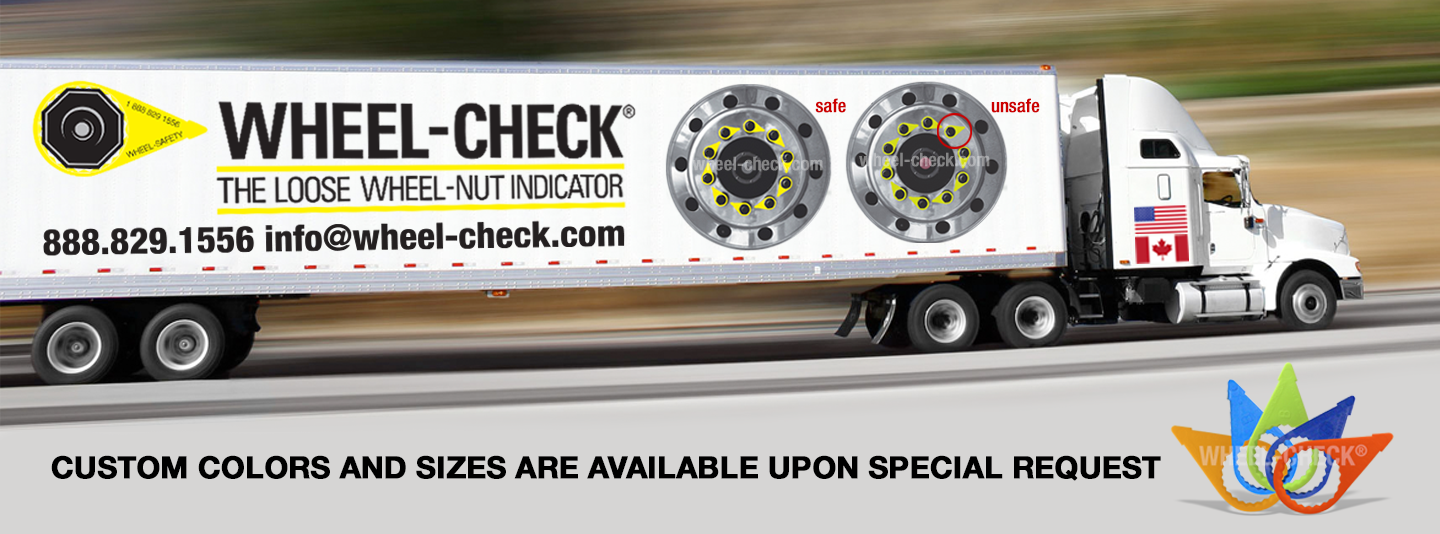
CANADIANS RESEARCH WHEEL-LOSS ACCIDENTS
By Charles A. Snyder, Washington Correspondent
Responding to local media reports of 18 commercial vehicle wheel-loss accidents in 1995, Ontario's Association of Professional Engineers researched the problem and issued an eight-page report to the Ontario Ministry of Transportation and the Ontario Trucking Association. Predictably, the report called for improved wheel care, with emphasis on maintaining proper wheel-nut torque.
But the report also warned that, despite good maintenance practices, brittle and otherwise flawed studs and nuts can cause wheel loss.
In fact, the researchers claimed that "a very serious problem" exists with respect to the aftermarket sale of substandard wheel-mounting hardware in Canada. Consequently, the researchers recommend retention and "close inspection" of all failed wheel-mounting hardware, to promote safety recalls of aftermarket and original equipment when frequent failure is noted.
The U.S. has a similar problem with wheel loss and inferior hardware, according to the National Highway Traffic Safety Administration's (NHTSA) Office of Defects Investigation (ODI).
Fleet managers who experience frequent wheel fastener failures should report the problem to NHTSA's Auto Safety Hotline at 800-424-9393 or 202-366-0123.
ODI says, approximately 1,000 accidents annually result from wheels falling off commercial vehicles. Left-side wheels are more likely to hit another vehicle and generate an accident report than right-side wheels, which often run off the road without causing notable damage. In some instances, however, loose right- side wheels seriously injure or kill pedestrians, sparking multi-million-dollar lawsuits against motor carriers.
Fleet experience indicates that well-maintained wheels are being lost, suggesting deficiencies in the composition and/or quality-control of mounting hardware.
It's impossible to properly torque defective fasteners, according to fastener engineers.
Defects include non-conforming threads on studs and/or nuts that bind, consuming torque required for proper clamping force.
Defects also include brittle studs (due to hydrogen embrittlement imparted by an improper heat-treat process or subsequent plating operation), plus dangerously weak studs/nuts that stretch and fail to provide proper clamping force when the recommended level of torque is applied.
More studs break in hot weather, suggesting the use of studs made from low-grade steel intolerant of high temperature.
Reportedly, the marginal quality of many outer and inner cap nuts on stud-piloted assemblies notably increases the risk of wheel loss.
Outer cap nuts are used to align and secure the outer wheel in a dual, stud-piloted assembly. These ball-seated nuts are supposed to, but sometimes don't, align precisely with curved bolt holes in the wheel.
Most outer nuts sold in the U.S. between 1970 and 1980 were made in Japan. Since the early 1980s, however, production of the lowest-cost outer nuts imported to the U.S. has shifted to Taiwan, Thailand and Korea where some manufacturers reportedly have less regard for precise and widespread adherence to production tolerances.
Since many low-cost outer nuts aren't punched through or formed with holes that are 100% dead center, they wobble when spun onto a stud. Consequently, they can't be properly seated or uniformly torqued.
Keeping such nuts snug is often impossible, due to gross thread irregularities. That is, the threads within the outer nut don't properly match-up with the threads on the stud.
While they're not a panacea for wheel loss, imported or domestically-produced SAE Grade 8 studs and through-hardened nuts provide an extra margin of safety, fleetmen claim.
Sources within The Maintenance Council of the American Trucking Associations suggest that fleetmen consult wheel suppliers about premium grades/sources of factory-installed and aftermarket mounting hardware.
Recognizing the threat posed by substandard fasteners of all types, Congress passed the 1990 Fastener Quality Act (Public Law 101-592). At that time, bad bolts had wrecked trucks, killed drivers and caused ODI to recall 8,000 commercial vehicles within 36 months.
While not yet implemented (due to in-fighting among members of the Fastener Advisory Committee, formerly charged with finalizing the law's requirements), PL 101-592 basically proposes to require lab certification of through-hardened hardware used in safety-critical applications. As the law currently is written, however, it does not apply to case-hardened wheel-mounting hardware, as opposed to through-hardened SAE Grade 8-type products.
The Cleveland-based Industrial Fasteners Institute (IFI) indicates that suggested revisions to PL 101-592, included in House Bill HR-1870, contain serious errors, prompting the addition of properly-worded revisions to a Senate bill seeking funding for the U.S. Commerce Department. However, Congress reportedly may eliminate the Commerce Dept., by failing to fund it. And that action also could kill PL 101-592, according to IFI sources.
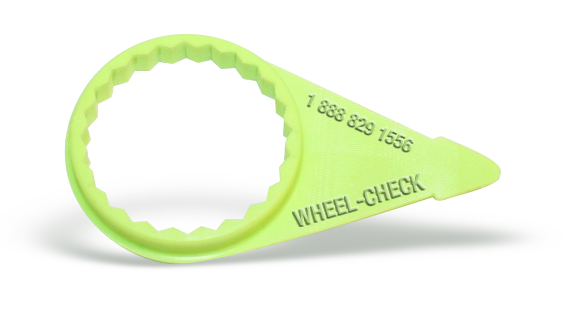
WHEEL-CHECK®: High visibility loose wheel-nut indicator
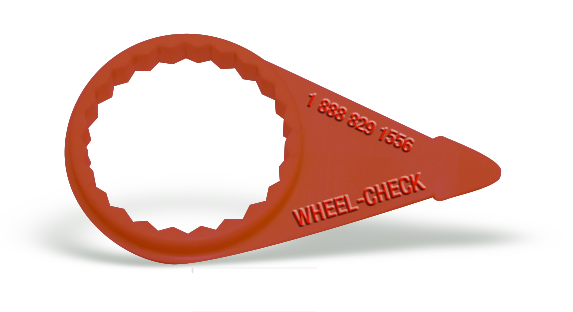
WHEEL-TORQUE: Red torque indicator used to mark a nut has backed off, and maintenance is aware of the problem
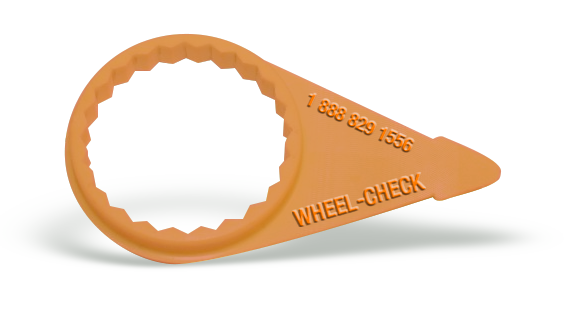
WHEEL-CHECK®, HIGH TEMPERATURE: Loose wheel-nut indicator that withstands higher temperatures
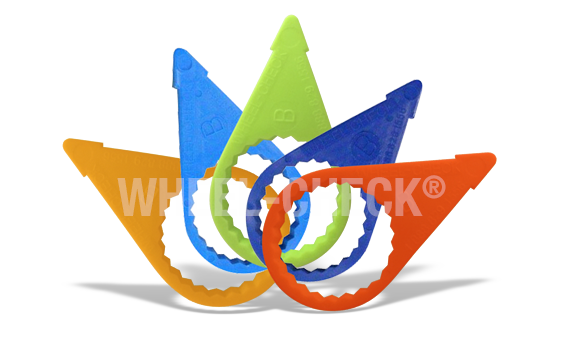
WHEEL-CHECK®, CUSTOM COLORS: Custom colors and sizes are available upon special request.
© All Rights Reserved. WHEEL-CHECK®, THE LOOSE WHEEL-NUT INDICATOR. "Over 25 years helping roads to be safer."
*The use of Wheel-Check® in no way guarantees wheel-offs will NOT occur.